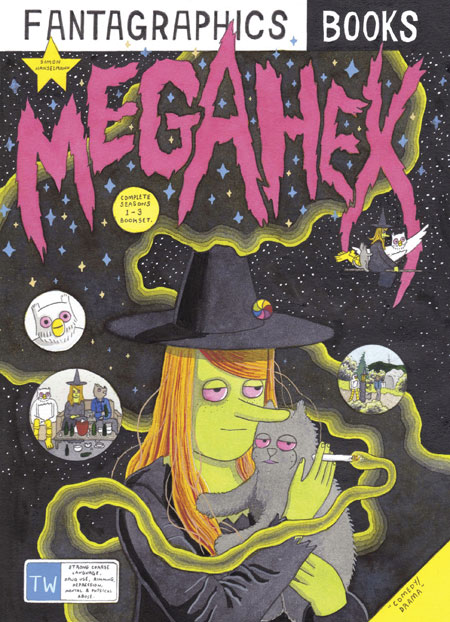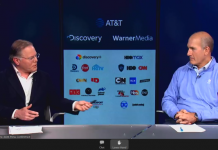Millennials, can’t live with ’em, can’t get a vanilla soy macchiatto without ’em. Among the many charges levied against these lazy, disengaged kids is that they ever grow up and read too many comic books. BUT IS THAT TRUE? Commentator Kevin Drum—who I normally adore—does some back of the envelope calculations and concludes that only 2% of millennials are comics readers. For the numerically inclines out there (translation: Torsten) here are his envelope calculations:
1. Diamond Comic Distributors sold about 84 million comics in 2013. Diamond is damn near a monopoly, but it’s not a total monopoly, and that number is only for the top 300 titles anyway. So let’s round up to 100 million.
2. That’s about 8 million per month. Some comic fans buy two or three titles a month, others buy 20 or 30. A horseback guess suggests that the average fan buys 5-10 per month.
3. That’s maybe 1.5 million regular fans, give or take. If we figure that two-thirds are Millennials, that’s a million readers.
4. The total size of the Millennial generation is 70 million. But let’s be generous and assume that no one cares if teenagers and college kids are still reading comics. Counting only those over 22, the adult Millennial population is about 48 million.
5. So that means about 2 percent of adult Millennials are regular comic book readers. (If you just browse through your roomie’s stash sporadically without actually buying comics, you don’t count.)
As back of the envelope stuff goes, this feels…pretty accurate. There are a bunch of comics distro sources not included in even the rough diamond estimate, but even that would only boost it to 3%.
However, my own extremely solipsistic personal observations indicate that even if people in their 20s and 30s don’t purchase so many comics, they sure know about them. Does a single copy of Ghost World or Hyperbole and a Half purchased count as being a comics reader?








I think Drumm and the Beat is confusing comics readers with comic book readers. Comics are more than just comic books, and I’d imagine a much higher percentage are comic readers — simply from circulated comic strips on social media. These calculations above also don’t figure in webcomics, comics publications distributed outside of Diamond (which there are many), as well as the ye old newspaper strips.
Those individuals born from 1982 – 2004. So… 10-32 years old.
Approximately 80 million people.
“But let’s be generous and assume that no one cares if teenagers and college kids are still reading comics.”
Wow. Why make that assumption? Oh… I guess he’s being generous.
Lots of people DO care… it’s where future readers are coming from.
(And when I was in high school and college, I was a regular reader and consumer of comics, so I suspect now, with digital comics and CBZ files and libraries, it’s easier to read comics even with a tight budget.)
Can the same assumptions and envelope math be used for ANY demographic group?
“5. So that means about 2 percent of adult Millennials are regular comic book readers.”
Meaning they buy one comic a month? Which does set the bar rather low.
He mistakes “regular comic book readers” with “regular comic book buyers”.
So 2% are regular customers?
These are just Diamond COMICS figures. Periodical paper copies sold in comics shops.
What about periodical comics sold online as e-books?
What about graphic novels sold outside comics shops? (Including the what-all-the-cool-kids-are-reading manga titles like “Attack on Titan”.)
What about daily comic strips, either in newspapers or online? (Still a readership, either by subscription or advertising-generated revenue.)
I’d say that at least one million Millennials have read “Smile”. (At least 200K bought the book via Scholastic book fairs.) 200K first printing for “Sisters” this year.
I’d approximate that at least five million Mills have read “Wimpy Kid”.
Then there are the copies of Persepolis, Maus, Watchmen, Fun Home sold every semester to college students.
As a bookseller, I’ve heard the anecdotal statistic about readership in the U.S…. how most people don’t even buy ONE book a year.
http://www.pewinternet.org/2014/01/16/a-snapshot-of-reading-in-america-in-2013/
The typical (median) American reads FIVE books a year.
Roughly a quarter of the adults in the U.S. have not READ a book the past year. (Let alone PURCHASED one.)
In 2012, 52 percent of 18-24 year-olds had read a book for pleasure. 25-34: 59%.
(NEA Research Report #47 http://arts.gov/sites/default/files/ToRead.pdf)
Here’s the data from DC’s New 52 survey (via ICV2):
13-17 1%-2%
18-24 14%-22%
25-34 37%-42%
35-44 27%-35%
45-54 7%-11%
55+ 2%
51-64%, 18-34 years old.
An oldie but a goodie…
For a couple years I’ve been blaming it on lack of sleep and too much pressure from my job, but now I found out the real reason: I’m tired because I’m overworked.
The population of this country is 237 million.
104 million are retired. That leaves 133 million to do the work.
There are 85 million in school, which leaves 48 million to do the work.
Of this there are 29 million employed by the federal government, leaving 19 million to do the work.
2.8 million are in the Armed Forces, which leaves 16.2 million to do the work.
Take from the total the 14,800,000 people who work for State and City Governments and that leaves 1.4 million to do the work.
At any given time there are 188,000 people in hospitals, leaving 1,212,000 to do the work.
Now, there are 1,211,998 people in prisons. That leaves just two people to do the work.
You and me. And you’re sitting at your computer reading jokes.
I work in marketing and that number is pretty shocking and damning. It would be interesting to cross correlate with market penetration on baby boomers, gen x ers, and also segment on demand online (digital) vs non digital consumption
If the 2 percent figure is correct, what’s gonna happen when Boomers and Gen X’ers get too old to go to comic shops?
My very unscientific observation is that plenty of Millennial females are reading manga, which they mostly buy at bookstores, but the comic shops are still kept alive by the over-30, overweight, bearded, balding guy in the superhero T-shirt.
I’m with Chris A above…monthlies are only one strand of comics. The catalogue of standalone graphic novels has grown exponentially in the last 10/15 years and there’s no mention of it. Surely a far bigger figure than those still going to the shop once a week? Total sales, all outlets, would be a more useful figure.
One of the most successful independent shops here in the UK says only 10% of their income comes from monthlies. It does seem from here that the US is still stuck in the monthly big 2 (3,4,5) mindset. It still dogs us here to an extent with Forbidden Planet’s huge market share and antidiluvian mindset but the notion of the ‘real mainstream’ ie. anything thats not Marvel/DC/Superheroes is catching on. And needs to if those sales figures are ever going to grow.
I saw big piles of unsold Thors, Captain Americas and Ms Marvels at my local stores while Christmas shopping. Look for those titles to take big dips in 2015. So apparently “diversity” isn’t bringing the Millennials into the stores either.
i was having a conversation the other day with a co-worker who’s a recent college grad. She loves comics, but reads them digitally, doesn’t have an LCS. She lives in a small apartment with several roommates, so no room for collecting long boxes of comics. But very much a super fan and has a massive digital pull list, loves traveling to cons to go to panels and cosplay….doing fan stuff over collecting back issues and CGCing issues. Its one person, but I wonder if this she is becoming more of a rule than an exception for the next generation of fans?
The part about the roommates and not having the room to collect physical comics stands out for me as so much of the millennial generation is moving to big expensive cities for career opportunities.
FEELS accurate? That’s what makes it wrong. Use data, not ‘feelings’.
We have no data on who reads weekly comics. NONE.
Though my own personal observations of comic shops and conventions around the country put the average age of a weekly reader at 40-45. Weekly comics are for old habitual people.
TPB’s are a different story.
And here’s the Facebook retort….
Using just main terms like “comic,” “comics,”graphic novels,” and “manga” there are 18.2 million that like those terms and are listed as millennials (1982-2004).
There’s 80 million millennials total on Facebook, which puts them at 22.75% of that population.
I don’t know where the problem is, but I find it hard to believe there are 1.5 million regular comics fans but only about 100,000 of them buy “Batman” every month.
At least it’s two percent and not lower. I am proud to be part of that two percent!
Go ask anyone in the publishing industry what percent of the adult population reads fiction. Or reads anything.
I am an avid comic reader and buyer, but next to none of it passes through Diamond. Same with most of the comic readers I know.
Just because one distributor isnt doing great doesnt mean the artform is at risk.
“She loves comics, but reads them digitally”
Different strokes for different folks. Anything that gets people to enjoy graphic storytelling, or whatever silly term you prefer, is fine with me.
I am kind of curious at the future of the long term digital reader, and they will be readers because what does “collector” even mean in the digital world? How long will readers hold onto their digital copies? What value will they see in them? Will the lack of physical investment increase or lessen loyalty to the medium, genre or creators?
Mike
I’m an ‘adult millennial’ and a comics lifer, but these statistics would not count me. I tend to buy either digital comics, graphic novels, or reprint collections of old strips. If I buy comic books, they tend to be back issues (when my LCS has a big sale), rather than anything the newest Diamond shipment.
Using this numbers seems to be a bit like crunching the figures from the Billboard Hot 200 singles charts to calculate how many people listen to music.
Comments are closed.